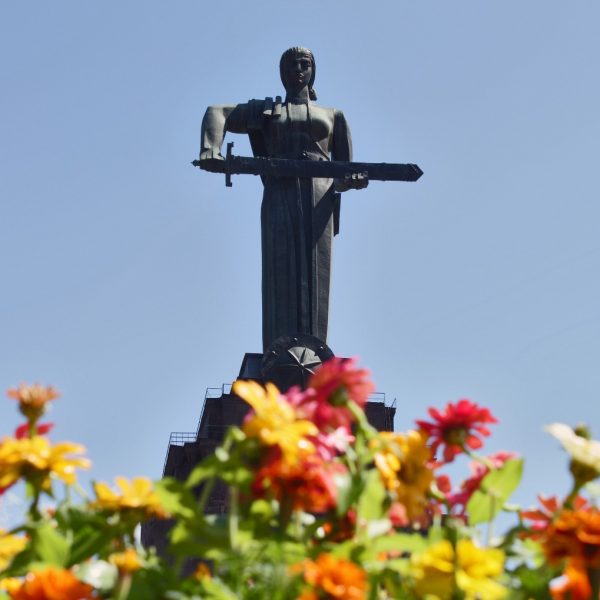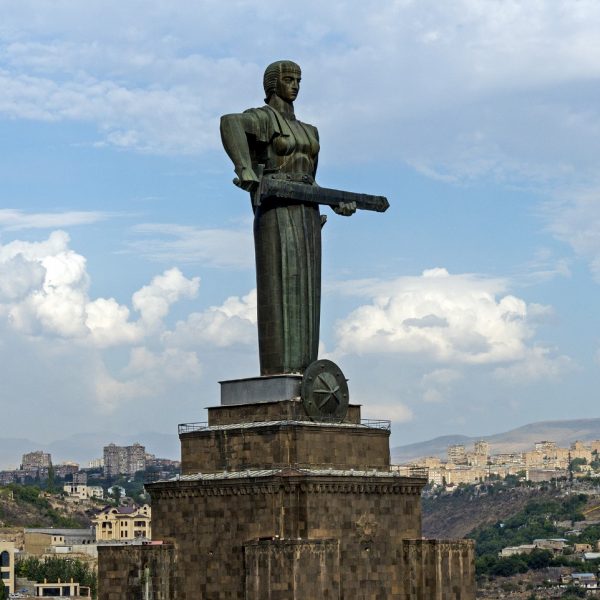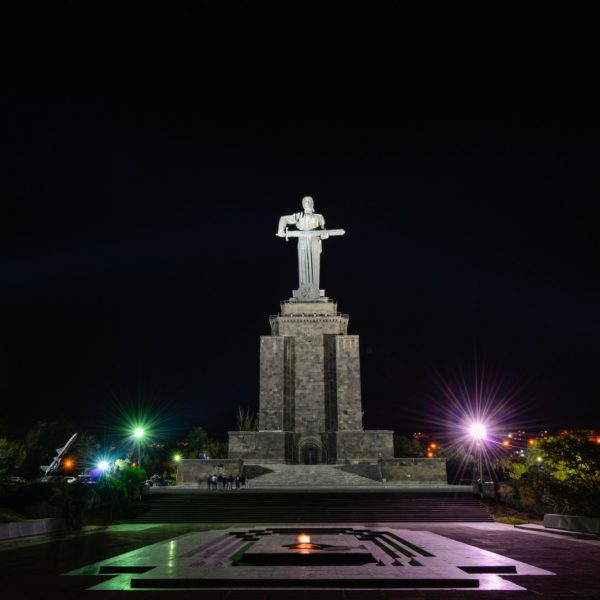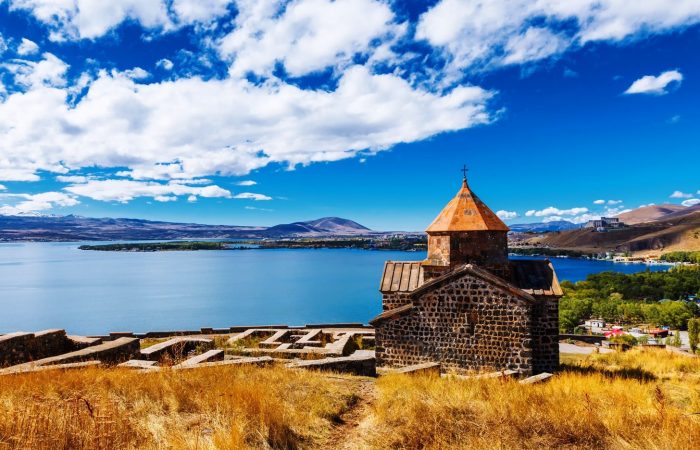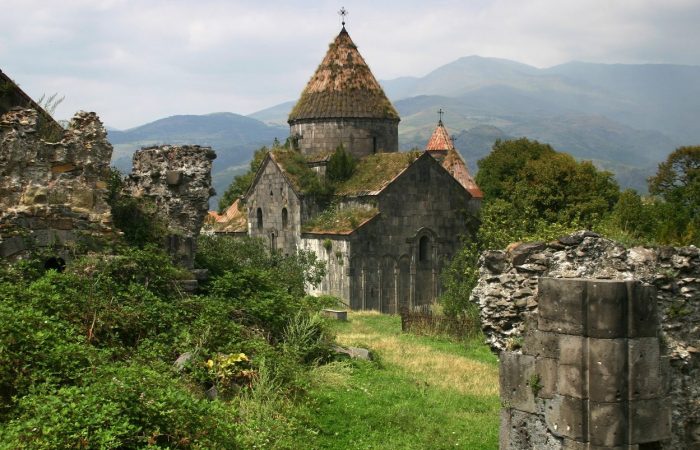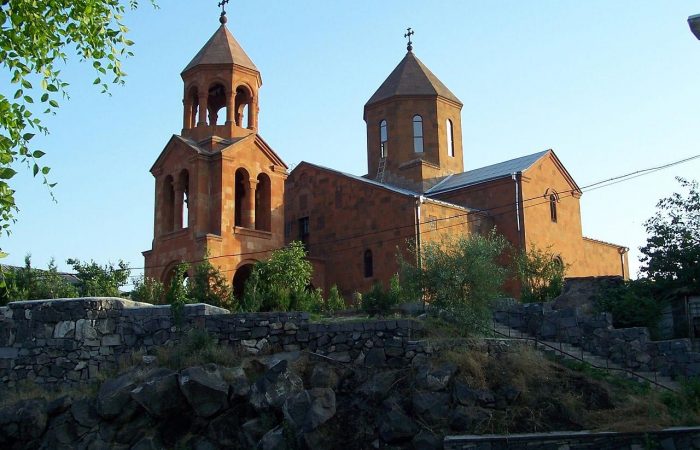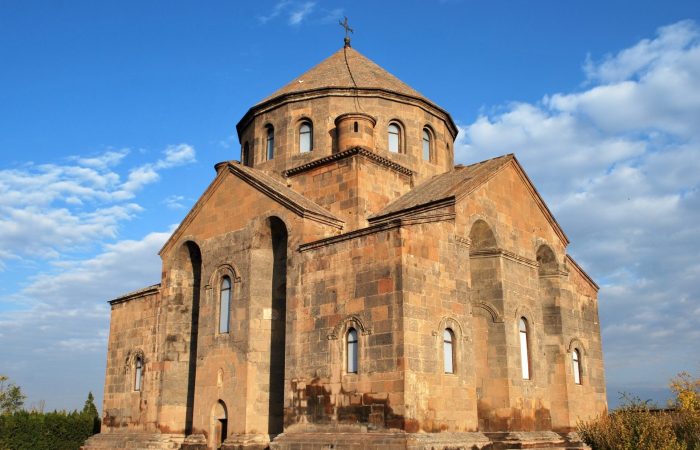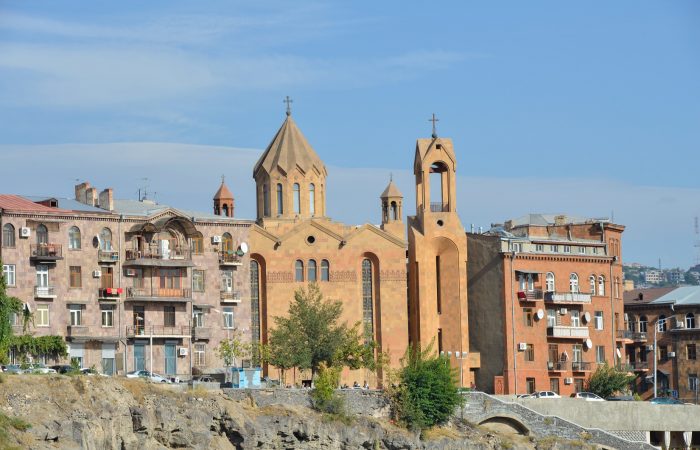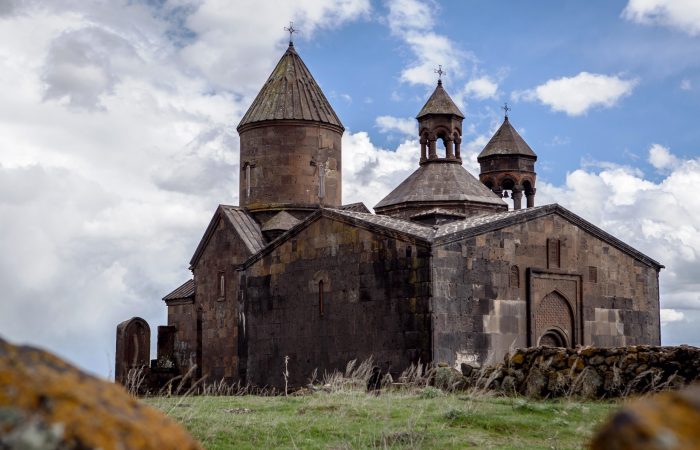Mother Armenia Pre-History
Armenia was a Soviet country for around 70 years. That was a period when the love and respect towards the rulers used to gain different forms of expression. In this regard, exactly where the Mother Armenia Statue stands today there used to be the monumental statue of Joseph Stalin, the Premier of the Soviet Union from May 6, 1941 to March 5, 1953. Stalin’s statue was a victory memorial for the Second World War, which had ended in 1945.
The statue was opened on the 30th anniversary of the establishment of the Soviet Armenia; that is on November 29, 1950. The statue’s sculptor was Sergey Dmitrievich Merkurov, a Soviet sculptor mounumentalist of Greek-Armenian descent, and the architect was Rafael Israelyan, Armenian architect and designer based in Yerevan. A year later the statue was awarded a Soviet medal.
Back then, various rumors circled in the city, which had one common trait – they all claimed that the day before the statue was unveiled the “Father of Nations,” that’s how Stalin was commonly referred to, had arrived in Yerevan in secret to see the statue. They say the statue was opened only after Stalin approved it.
Three years after Stalin’s death his dictatorial rule and cult of personality were strictly denounced. A decision was passed to remove all his statues. Most countries were very quick at the statue removal process, but not Armenia. Rumors spread stating Hakob Zarobian, the 1st Secretary of the Communist Party of Armenia from 1960 to 1966, had no wish to remove the statue. While the reality depicted another picture; Soviet Armenia lacked the corresponding equipment. The statue was eventually removed in 1962. The removal cost the life of one of the soldiers and injured dozens of people. People used to say that Stalin kept on killing people even from beyond the grave.
Years later Israelyan admitted that he was very much certain Stalin would not occupy the pedestal forever and therefore had designed it in a way as to resemble a three-nave Armenian church.
Mother Armenia Statue/Monument Sizes
Mother Armenia is one of the tallest statues in Yerevan. It is 22 meters (approximately 72 feet) high. Overall, the monument together with the statue is 51 meters (approximately 167 feet) high. The statue and the pedestal are made of different materials. The statue is made of hammered copper and the pedestal – of basalt.
Mother Armenia Statue: Meaning and Symbolism
The Mother Armenia Statue was placed on the pedestal only five years later, in 1967. Made of hammered copper the statue was designed by sculptor Ara Harutyunyan. Due to its height and the carefully chosen strategic location on a hill the statue seems to guard the Armenian capital.
The Mother Armenia Statue symbolizes peace through strength. With that huge sword in her hands and the shield at her feet she might remind people of such female figures of Armenian history as courageous Sose Mayrig (Sose Mother), who was named so for her maternal concern for the Armenian Youth. It stands for all those women who were not afraid to take up arms and stand by their husbands during the clashes with Turkish troops and Kurdish irregulars.
Next to the monument there is the Grave of the Unknown Soldier. It symbolizes the eternal memory of the war victims.
Mother Armenia Statue and May 9
Each year on May 9 Armenia celebrates the Victory Day in the Second World War. The representatives of the Armenian Government visit the Victory Park and lay a wreath at the monument in the memory of the Unknown Soldier. The victims are usually honored with a minute of silence. Note that for Armenians May 9 is a three-in-one Holiday because it marks not only the Victory Day, but also the Liberation of Shushi (a town in the disputed region of Nagorno Karabakh) and the anniversary of the Nagorno Karabakh Defense Army.
Mother Armenia Museum of Defense Ministry
Inside the pedestal there is the Mother Armenia Museum of the Ministry of Defense. Built in 1950 by architect Israelyan, in 1970 it was established as the Museum of History of the Great Patriotic War (World War II), therefore it primarily contained exhibits about World War II. Presently, much of the exhibition is dedicated to the Nagorno Karabakh War.
The Museum features 30,000 exhibits, including photos, documents and materials related to the Nagorno Karabakh war. On the first floor showrooms filled with materials regarding Armenian sacrifices during the Great Patriotic war can be found. Of special interest are the belongings of Marshal Hovhannes Baghramyan. There is also a map featuring the campaign for the capture of Shushi.
The museum is open from Tuesday to Sunday. From Tuesday to Friday it’s open from 10 am to 5 pm, while on Saturday and Sunday – from 10 am to 3 pm.
Victory Park
The year 2010 marked the 60th anniversary of the establishment of the Victory Park. The Park was initially called “Haghtanak” (Victory), but after Stalin’s statue was placed there, it came to be more known as “Monument.”
The Park is named “Victory” in commemoration of Soviet Armenia’s participation in the Second World War. It’s situated at the top of Cascade in Yerevan. The Park is very large and includes an artificial lake, an amusement park with various merry-go-rounds, outdoor cafes, the Mother Armenia Monument and the Mother Armenia Museum of the Ministry of Defense. Picnics are usually organized on the forested area of the Park.
Ultimately, Mother Armenia is the female personification of Armenia, which guards the Republic of Armenia against every enemy and every invasion. It’s the live symbol of Armenian strength and no matter what, will always be there and represent the almightiness of this small, yet never giving up nation.
Location
Mother Armenia is located in Victory Park, which is situated on Azatutyan Avenue, Area 2.

